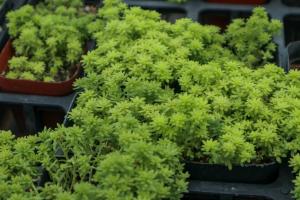Introduction
Jasmine plants are known for their fragrant and beautiful blooms. They can be grown both indoors and outdoors and are relatively easy to care for. In this article, we will discuss how to grow jasmine plants successfully.
Choosing the right location
Jasmine plants require bright, indirect sunlight, so it is best to place them near a window that does not receive direct sunlight. If you are planning to grow jasmine plants outdoors, choose a location that receives plenty of morning sun but is shaded in the afternoon.
Preparing the soil
Jasmine plants thrive in well-draining soil that is rich in nutrients. Before planting, prepare the soil by adding compost or organic matter to improve its fertility. Ensure that the soil is well-drained to prevent waterlogging, which can cause root rot.
Planting the jasmine plant
After preparing the soil, it is time to plant the jasmine plant. Dig a hole that is deep enough to accommodate the root ball, ensuring that the plant is at the same level as it was in the pot. Backfill the soil and water the plant thoroughly. If you are planting multiple jasmine plants, space them at least 6 feet apart.
Watering the jasmine plant
Jasmine plants require moderate watering. Water the plant thoroughly when the top inch of soil is dry to the touch. Avoid overwatering, as this can lead to root rot. Ensure that the pot has proper drainage holes to prevent standing water.
Fertilizing the jasmine plant
Jasmine plants benefit from regular fertilization. Use a balanced fertilizer every two weeks during the growing season, decreasing to once a month during the winter. Be careful not to over-fertilize, as this can burn the plant.
Pruning the jasmine plant
Pruning jasmine plants regularly is essential to maintain their shape and promote new growth. After the blooming season, trim back any dead or overgrown branches to encourage new growth. Use sharp, clean pruning shears to prevent damage to the plant.
Dealing with pests and diseases
Jasmine plants are susceptible to pests such as aphids, mealybugs, and whiteflies. Inspect the plant regularly, and treat any infestations promptly. Additionally, overwatering or poor drainage can cause root rot, which can be prevented by ensuring proper drainage and avoiding overwatering.
Conclusion
Growing a jasmine plant requires patience and care, but the beautiful blooms and heavenly scent make it worth the effort. By following the steps outlined in this article, you can grow a healthy and beautiful jasmine plant in no time.

 how many times do yo...
how many times do yo... how many planted tre...
how many planted tre... how many pine trees ...
how many pine trees ... how many pecan trees...
how many pecan trees... how many plants comp...
how many plants comp... how many plants can ...
how many plants can ... how many plants and ...
how many plants and ... how many pepper plan...
how many pepper plan...































